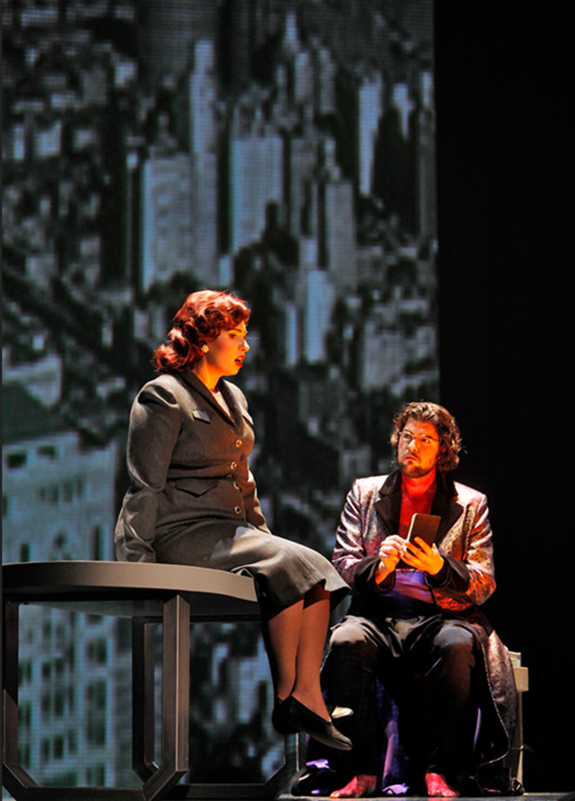In this article Nicholas Muni explores the intersection of acting and psychological therapy. It is common knowledge that many actors find their work cathartic, providing an emotional release of some kind—sometimes to a very deep and intense extent. The same can be said of many athletes, especially in high-stakes events like the Super Bowl, the Wimbledon finals, the World Cup. While it can fairly be said that athletics are more physical and acting is more cerebral, both are emotional due to the „drama“ inherent in events that have a pre-defined time constraint or some other event-ending mechanism: a finish line, for example, or the denouement in a play or opera.
Unlike a play or an opera, an athletic event is not pre-rehearsed. It is an actual first-and-only-time experience, which in and of itself heightens the suspense and intensity. As Nic Muni sees it: „Part of the craft of acting is to learn how to give the illusion of spontaneity. It is that „first time“ quality that creates much of the suspense and tension in the theater. Even though the audience knows the play has been rehearsed—and may even know its final outcome—if the actors are sufficiently skilled in giving the illusion of spontaneity, the audience will experience the thrill of a „real“ experience.“
Why is it that so many of our leisure activities simulate drama, suspense, tension, etc.? Is it so that we can vicariously experience the journey of personal trauma? And, if so, what is the value of this vicarious experience?
Many years ago, Nicholas Muni did an audition for admission into an acting troupe. „I prepared and presented part of a monologue from Shakespear’s Hamlet“,
“O, what a rogue and peasant slave am I!
Is it not monstrous that this player here,
But in a fiction, in a dream of passion,
Could force his soul so to his own conceit
That from her working all his visage wann’d,
Tears in his eyes, distraction in’s aspect,
A broken voice, and his whole function suiting
With forms to his conceit? and all for nothing!
For Hecuba!
What’s Hecuba to him, or he to Hecuba,
That he should weep for her? What would he do,
Had he the motive and the cue for passion
That I have? He would drown the stage with tears
And cleave the general ear with horrid speech,
Make mad the guilty and appall the free,
Confound the ignorant, and amaze indeed
The very faculties of eyes and ears.”
Nic Muni continues, “After my presentation, the head of the troupe worked with me, asking me to distill the “message” of the monologue to its essence, in my own words. After a few moments, a phrase popped out of me: ‘I am a piece of s___.’ He asked me to repeat it and to allow myself to sink into the feeling as I said it. After the third or fourth repetition I began to sob, eventually uncontrollably, as I repeated these words. They struck such a deep emotional chord that I could not stop the descent. Eventually, the emotion subsided and I came back to the present. The room was stunned (as was I) and congratulations and admission into the troupe followed. I felt I was really acting that day. I was elated. I felt a sense of pride and deep satisfaction. Little did I know that I had just experienced a “primal”.”
Several years later Nicholas Muni began doing Primal Therapy (also known as Abreactive Therapy), a form of psychotherapy pioneered by Dr. Arthur Janov in the 1960s, which helps individuals discover and heal their deepest emotional scars by re-living the original traumatic event. The unique approach allows people to express their feelings in a safe, supportive, judgement-free environment with the goal of resolving psychological trauma.
Janov’s theory stated that the root of mental health problems is repressed emotions and feelings, with psychological pain dating back to situations that were too traumatic for individuals to safely experience when they initially occurred (e.g., neglect, physical/emotional abuse, war, etc.). He believed that releasing these deep-seated emotions through expression is the only way to truly resolve psychological/emotional trauma and achieve greater mental well-being.
Below, Nicholas Muni outlines the basic stages involved in a primal session and then points out the similarities to the typical stages in a drama.
• Regression
During the first phase, patients are encouraged sink into whatever they are feeling at the moment in order to “descend” into the subconscious and eventually re-live their traumatic experience, feeling all the emotions and sensations they experienced at the time. Going with the flow is essential here; individuals who allow themselves to feel whatever comes up for them reap the most rewards later.
• Release
As the name suggests, patients are encouraged to express any emotions as they arise, in whatever way they wish; verbal, non-verbal, physical movements, etc. Experts note it may feel uncomfortable or frightening at times, but the body and mind will feel the release of the repressed emotions by the end of the session.
• Integration
Now it’s time for the individuals’ life stories to come together. Stage three involves patients having insights of various kinds, making conscious connections between the re-experienced trauma and the present.
• Resolution
The final phase provides individuals with closure around the problems they addressed in the aforementioned steps. People often find they’re able to live more freely without shouldering burden of repressed emotional hurt.
Although slightly different, the corresponding four stages in any drama or opera are Repression, Rising tension, Climax and Resolution. The first two, Repression and Rising tension, are circular in nature, mirroring what occurs in neurosis. The uncomfortable or traumatic feeling is repressed because it is too painful to experience. The repression results in an increase in the buried energy, which is then further repressed, which results in even more tension. The buildup of tension eventually and inevitably results in an explosion of emotion, an unleashing of the pent-up energy. The situation then resolves and once more a state of peace or balance results, as the original tension has been released—only to build up again after a while, resulting in a repeat of this sequence.

This sequence can occur numerous times during a drama, opera or athletic event until the “big one” occurs, which is inevitably the central issue of the piece.
Nic Muni explains the relationship between therapy and acting in this way: “What I experienced in my Hamlet audition was a primal episode in which I relived a childhood trauma that intersected so closely to the situation Hamlet finds himself in that I was deeply triggered into re-experiencing it. It was the psycho-emotional distillation of the feeling of worthlessness. The troupe I was auditioning for based their working methods on the Grotowski technique, an approach steeped in the principles of Stanislavsky, the progenitor of “method acting”, which essentially asks the actor to feel actual emotions to fully become the character.”
“What I thought was very good acting on my part in that audition was, in actuality, a therapy session.”
